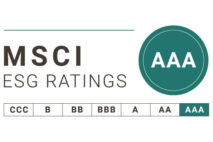The saying, “The king is dead. Long live the king,” refers to how, under a monarchy, sovereignty is conferred to the new king upon the death of the old. The phrase, “Inkjet is dead. Long live inkjet,” has been kicking about in my head as the low-end inkjet hardware market, which most have agreed is dying a long slow death, finally produced a couple of corpses. Certainly, many in the industry are devoting their all to ensure that as the consumer inkjet market declines, inkjet technology survives and thrives in other markets such as office environments, commercial, and industrial.
As widely publicized, Lexmark and Kodak are exiting the inkjet hardware market. Lexmark announced on August 28 that it would cease developing and manufacturing inkjet hardware—and not just the consumer inkjet line the firm had long been trying to jettison but also its line of inkjets for small-office/home-office users and business environments. On September 28, Kodak, which has seen a long slow decline in many of its businesses and unwisely made consumer inkjet technology a key part of its turnaround strategy, announced that it would wind down production of consumer inkjet hardware. The two companies are not alone. Although it was not as widely publicized, Olivetti, which developed its own inkjet-based faxes and looked to bring its inkjet technology into the industrial market, decided to liquidate its inkjet business in June (see press release).
Actionable Intelligence has already published its analysis, or should we say autopsy reports, on why Lexmark’s and Kodak’s inkjet businesses failed (see “Lexmark Inkjets: Requiescat in Pace, Part I and Part II” and “Kodak Will Exit SOHO Inkjet Hardware Market but Keep Selling Ink”). To a large extent, Kodak’s and Lexmark’s market exits were based on their relatively small market shares, the companies misreading market dynamics, poor market timing, and some inferior products. Fundamentally, however, it is difficult it is to make a profit in the lower ends of the inkjet business, particularly when you are a smaller player. These firms had a smaller installed base from which to derive a stream of supplies annuities—particularly now that those revenue streams are not as robust as they once were and consumer print volumes have declined.
Hoping to one day compensate for their dwindling consumer inkjet businesses, vendors such as HP and Epson and even Brother have shifted their product lines to chase higher-volume users in businesses. Kodak, however, eschewed the business inkjet market completely, and Lexmark, while publicly avowing it would target business users, offered products that were inferior for these environments until launching the OfficeEdge machines (see “Lexmark Gets Serious about Business Inkjets with New OfficeEdge Series”), which addressed many of the failings of previous generations of products but ultimately proved to be too little, too late.
Canary in a Coal Mine?
Following these game-changing announcements, many may wonder whether Lexmark’s and Kodak’s strategic business decisions mean that the consumer and business inkjet market as a whole is doomed. Were these firms just the first to expire—the proverbial canaries in the coal mine? Or is the outlook brighter than that? After all, inkjet vendors such as Brother, Epson, HP, and Memjet have invested significant resources in developing platforms to meet the needs of business users as the consumer inkjet market declines. These firms, it seems, clearly believe in inkjet’s future, and before Lexmark’s market exit, we would have counted that company among their number.
What is clear is that the consumer inkjet market is declining rapidly as new technologies replace consumers’ need and desire for printed output. However, the consumer inkjet market is enormous, and the steep declines are not universal. In emerging economies, growth is driven not only by consumers acquiring their first or replacement inkjets but, to a lesser degree, by users in these cost-conscious regions employing these printers in environments for which they were never intended—as low-grade retail photo printers or as business devices. Moreover, vendors have come up with innovative hardware and supplies designs to retain more of their supplies share in emerging economies. So, in short, the overall size of the market is declining, but now the remaining vendors will get a bigger share.
The future of business inkjet is murkier. Research companies such as IDC and InfoTrends indicate they have seen robust growth in this space. While companies like Brother, Epson, HP, and Memjet have invested untold millions into moving inkjet technology into the office, these firms have had varying degrees of success. Still, it is safe to say the market has yet to see widespread transition from electrophotographic to inkjet devices in small to medium-sized business (SMBs) or enterprises. However, as the lousy economy persists and worsens in regions such as Europe, there are signs that office users’ onetime bias against inkjet technology is lessening when faced with the very real cost savings that inkjets can deliver.
Where inkjet printing has seen the greatest success in eroding other technologies’ stronghold is in the commercial and industrial markets. This is why Kodak has said it will focus on commercial, packaging, and functional printing solutions moving forward. The former consumer photography giant has all but completely exited the business-to-consumer market to focus on the higher-margin business-to-business market, and inkjet will be a key part of that strategy for Kodak moving forward.
Who Benefits? Will There Be More Exits?
With Kodak and Lexmark exiting the consumer and business inkjet hardware space, Brother, Canon, Epson, and HP stand to benefit. Brother, Epson, and HP in particular are best placed to take advantage of businesses users’ growing interest in inkjet technology. For its part, Canon has dabbled in the business inkjet market but has not chosen to invest in new business platforms in quite some time. Although Memjet office printers are available from some lesser-known vendors in some markets, where this technology has seen the most buy-in from OEMs is wide-format and industrial applications.
It will be interesting to see what happens among the remaining competitors in the desktop inkjet business now that the roster of competing firms has narrowed. I don’t think it is out of the question that we will see additional players decide to stop selling certain classes of inkjet devices in certain markets if not necessarily pull out of the inkjet market altogether. Will Brother pick up enough share in inkjet now that Kodak and Lexmark are walking away to justify the firm’s continued investment in the technology? Or, as a smaller market player, will it too reevaluate its presence in the inkjet market? And what about Canon’s reluctance to enter the business inkjet market? What does that say about the firm’s strategy and the viability of its product line moving forward?
Idle speculation about additional market exits aside, there will be firms that continue to do an enormous business in the desktop inkjet space. Similar to the many companies dependent on inkjet hardware and supplies revenue for their survival, I hope that ultimately inkjet survives and, to paraphrase Mark Twain, that the reports of inkjet’s death will prove greatly exaggerated.
Clearly, these are interesting times, and there are lots of possibilities. Who do you think the winners and losers will be in the quickly changing desktop inkjet market? Share your thoughts by commenting below. You can also email me privately at editor@action-intell.com.







1 Comment
This is another blow to the giant that was Kodak. It seems that the lack of vision was their greatest failings since the appearance of digital photography.
It seems that in business as in life, size can sometimes hinder your ability to adapt to new challanges.